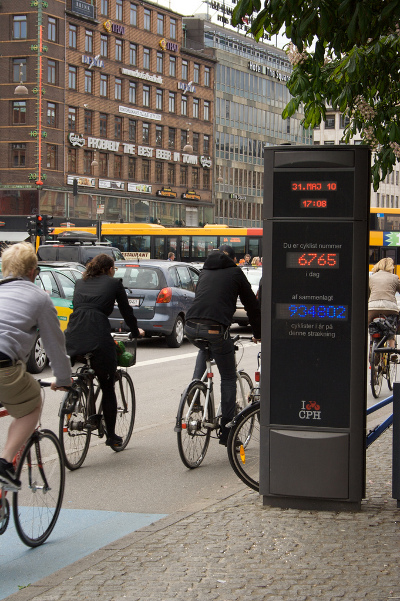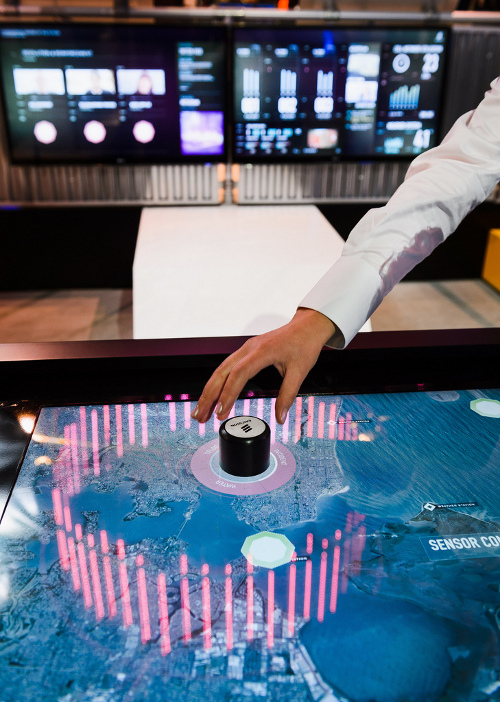
As the world continues to urbanize at a rapid pace, the demand for cities which are resource-efficient increases. As a result, the concept of being a “smart city” has become an important discussion topic both in New York City and worldwide. But what is a smart city?Smart cities:
- Use the intersection of people, technology, and data to predict, rather than react to, the future’s demands.
- Invest in creating new ways to improve efficiency in their use of resources.
- Through the use of information and innovative communication technologies they implement solutions that result in cost and energy reduction, improved service delivery, reduced environmental footprint and support for the low-carbon economy.
Key components of smart city initiatives:
Energy & Water
Smart energy and water management means using renewable energy sources, improving the way energy is distributed, and improving efficiency in the way water is used. This includes taking actions such as installing smart grids and connecting building’s electricity meters to sensors that identify energy waste and outage prevention in real time. Smart energy grids can store energy from alternate energy sources like wind turbines and solar panels and use them reactively when they are most needed; smart water grids can monitor usage and help officials and consumers understand the impact of land use systems on water quality, quantity, crop production and biodiversity to help protect the water ecosystem.Role model:
The island of Malta has built a nationwide smart electric grid and water system. The system allows for real-time monitoring of electric use and set variable rates, allowing citizens to monitor and adjust their electric usage, improve efficiency and reduce cost in real time.
Mobility & Transportation  A smart city’s infrastructure focuses on reducing pollution and congestion and improving the overall flow of transportation. Solutions include the collection of data from sources such as public transportation stats, traffic patterns, toll booths, and meters, and syncing the information in real time to better understand and optimize operations. By interconnecting the information and making it available to the public, citizens are able to make smarter decisions as a whole. Cities can also implement smart cards for public transportation, road sensors that communicate traffic congestion and free parking spaces, and bike-sharing programs that increase citizen’s options for environmentally friendly means of transportation.Role Models:
A smart city’s infrastructure focuses on reducing pollution and congestion and improving the overall flow of transportation. Solutions include the collection of data from sources such as public transportation stats, traffic patterns, toll booths, and meters, and syncing the information in real time to better understand and optimize operations. By interconnecting the information and making it available to the public, citizens are able to make smarter decisions as a whole. Cities can also implement smart cards for public transportation, road sensors that communicate traffic congestion and free parking spaces, and bike-sharing programs that increase citizen’s options for environmentally friendly means of transportation.Role Models:
Helsinki, Finland aggregates all information on road conditions, accidents and traffic in order to make the capital city’s roads safer and to minimize traffic. By analyzing the aggregated data, they are able to predict potentially dangerous sections that require maintenance.
Singapore, London, and Hong Kong, have implemented all-in-one smart payment cards that cover all kinds of public transit. This has resulted in better planning, efficiency, and convenience for commuting citizens.
Many cities, including Paris and Copenhagen, have invested in bike sharing programs, bicycle paths, and car sharing systems. These investments have proved to reduce congestion and have improved citizens’ mobility.
Health & Wellness
A smarter healthcare system focuses on improving diagnoses, battling diseases, and helping individuals prevent illness by making smarter choices. Smart healthcare solutions include thing such as implementing a “secured sharing system” to open the flow of information between hospitals and medical institutions; this integrates clinical, financial, operational, claims, genomic, and other medical information and turns it into actionable knowledge for healthcare professionals. This provides more accurate patient information resulting in reduced errors and duplicate work, faster and more detailed analysis, and a more holistic patient-centered treatment approach. Medical devices and sensors can also be used to automatically capture accurate real-time patient information. Individuals can then store, track and stream their health information to caregivers and alert them when they need medical attention.Role model:
Spain is one of the leading countries in building a smarter, interconnected healthcare system. Their public healthcare service has installed a regionally integrated system that collects patient data so that whenever they access health care centers within their region, their information is accessible, complete, and updated – allowing doctors to provide faster, more accurate treatment.
Urban Data & Information  Smart cities utilize significant urban data and information to enhance the use and efficiency of a city’s systems, services, and utilities. A citywide network of wirelessly connected sensors provides city officials and citizens with concrete information about anything ranging from city facilities, utilities, roads, fire hydrants, and waste management so that they can make smarter decisions based on real-time data. The interconnectedness means that information is automatically communicated across the network in real time enabling the city to anticipate problems, resolve them proactively, and systematize resources to operate effectively. This improves the efficiency of everything from public transportation to waste management by optimizing their operations.Role Model:
Smart cities utilize significant urban data and information to enhance the use and efficiency of a city’s systems, services, and utilities. A citywide network of wirelessly connected sensors provides city officials and citizens with concrete information about anything ranging from city facilities, utilities, roads, fire hydrants, and waste management so that they can make smarter decisions based on real-time data. The interconnectedness means that information is automatically communicated across the network in real time enabling the city to anticipate problems, resolve them proactively, and systematize resources to operate effectively. This improves the efficiency of everything from public transportation to waste management by optimizing their operations.Role Model:
Barcelona is investing heavily in connecting people and things to a citywide Wi-Fi network. Waste management, public transportation, and city lights are wirelessly connected to efficiency. For example: in-ground sensors in parking spaces notify commuters so they quickly can find an available spot, resulting in reduced congestion and pollution. The goal is to streamline all the city’s information, including the flow of citizens, pollution, noise, traffic and weather conditions to reduce cost and improve economic, environmental, and social sustainability.

